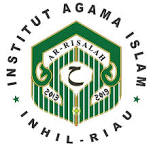Integrating Basic Listening with Cross-Cultural Understanding in Early Childhood Education Curriculum
DOI:
https://doi.org/10.61104/dz.v2i1.1956Keywords:
Arly Childhood Education, Listening Skills, Cross-Cultural UnderstandingAbstract
Early childhood education serves as the cornerstone for developing language skills and socio-cultural competencies in the global era. This study aims to examine the integration of basic listening skills with cross-cultural understanding in early childhood education curricula. A qualitative descriptive design was employed, utilizing classroom observations, semi-structured interviews with early childhood teachers, and curriculum document analysis, with thematic coding and triangulation applied for data validation. The findings reveal that listening activities through stories, songs, and play not only enhanced children’s phonological awareness and language comprehension but also fostered empathy, tolerance, and cultural sensitivity. These results affirm that merging listening skills with cross-cultural understanding offers an innovative framework for early childhood curricula, with implications for cultivating communicative, inclusive, and globally competent future generations.
Downloads
References
Banks, J. A. (2016). Cultural diversity and education. Routledge.
Byram, M. (2021). Teaching and assessing intercultural communicative competence. Multilingual Matters.
Chen, S. (2019). Multicultural story listening and intercultural sensitivity in early childhood education. Early Child Development and Care, 189(10), 1652–1665. https://doi.org/10.1080/03004430.2017.1389918
Cummins, J. (2000). Language, power and pedagogy: Bilingual children in the crossfire. Multilingual Matters.
Deardorff, D. K. (2020). Manual for developing intercultural competencies. UNESCO Publishing.
Dervin, F. (2016). Interculturality in education. Palgrave Macmillan.
Edwards, C. (2017). The hundred languages of children: The Reggio Emilia experience in transformation. Contemporary Issues in Early Childhood, 18(3), 258–260. https://doi.org/10.1177/1463949117714085
Field, J. (2008). Listening in the language classroom. Cambridge University Press.
Gay, G. (2018). Culturally responsive teaching: Theory, research, and practice. Teachers College Press.
Gilakjani, A. P., & Sabouri, N. B. (2016). The significance of listening comprehension in English language teaching. Theory and Practice in Language Studies, 6(8), 1670–1677. https://doi.org/10.17507/tpls.0608.22
Goh, C. C. M., & Vandergrift, L. (2021). Teaching and learning second language listening: Metacognition in action. Routledge.
Knight, J. (2014). International education hubs: Student, talent, knowledge-innovation models. Springer.
Mok, K. H. (2016). Massification of higher education, graduate employment and social mobility in the Greater China region. British Journal of Sociology of Education, 37(1), 51–71. https://doi.org/10.1080/01425692.2015.1111751
Noddings, N. (2013). Education and democracy in the 21st century. Teachers College Press.
Pinter, A. (2017). Teaching young language learners (2nd ed.). Oxford University Press.
Sahin, A. (2018). Critical thinking in Islamic education. British Journal of Religious Education, 40(3), 308–318. https://doi.org/10.1080/01416200.2018.1437394
UNESCO. (2021). Reimagining our futures together: A new social contract for education. UNESCO Publishing.
Vygotsky, L. S. (1978). Mind in society: The development of higher psychological processes. Harvard University Press.
Downloads
Published
How to Cite
Issue
Section
License
Copyright (c) 2024 Nur Istiqamah

This work is licensed under a Creative Commons Attribution-ShareAlike 4.0 International License.











 This work is licensed under a
This work is licensed under a 